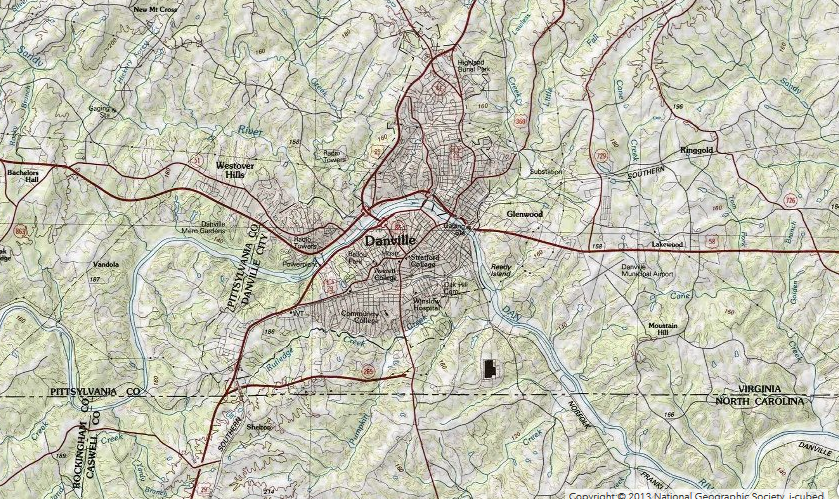
Danville is located on the Dan River where William Wynne started a ferry after he arrived in 1746
Source: ESRI, ArcGIS Online

Danville is located on the Dan River where William Wynne started a ferry after he arrived in 1746
Source: ESRI, ArcGIS Online
People have lived along the banks of what we now call the Dan River for 16,000 years. Native American cultures evolved there until the first Europeans arrived nearby in the 1500's. Hernando de Soto brought Spanish explorers, horses, dogs, and diseases to nearby Xuala (now Morganton, North Carolina) in 1540. Juan Pardo returned in 1567.
Native American military, political, and spiritual leaders were able to block the Spanish from doing watever they wished. The powerlessness of the elite must have altered perceptions of allegiance and loyalty, and probably shattered the structure of Native American societies in the late 1500's.
John Lederer, on his second journey to the Blue Ridge in May 1670, met the Native Americans in the region. By that time, Siouan-speaking tribes such as the Saponi and Totelo occupied the Piedmont of Virginia and North Carolina.
In 1673, English fur traders John Hatcher, Henry Hatcher, and Benjamin Bullington cut their initials into trees on the Dan River. Lederer and others increased the opportunity for Native Americans living in the western Piedmont to trade furs and deerskins directly with colonists living on the Fall Line, including Abraham Wood at his trading fort at present-day Petersburg. The Occaneechi had served as middlemen in that trade, but during Bacon's Rebellion in 1676 their town on the Roanoke River was destroyed.1
In 1728, surveyors and commissioners marking the Virginia-North Carolina boundary brought the first member of Virginia's gentry to the base of the Blue Ridge on the southern edge of Virginia. Col. William Byrd assigned a name to the South Branch of the Roanoke River. He named it the Dan River, a name in the Bible that defined one boundary of the land of Canaan.
There were enough travelers across the Dan River that William Wynne started a ferry after he arrived in 1746. The General Assembly authorized a tobacco inspection station there in 1793, and renamed the river crossing known as Wynne's Falls developed as Danville. The first lots of the initial 25-acre town were sold in 1795.
The Roanoke Navigation Company build a canal around the falls in 1816, and town boundaries were expanded in 1833. The Richmond and Danville Railroad arrived in 1856. The General Assembly approved the charter to define Danville as an independent city, politically separate from the surrounding Pittsylvania County, in 1890.2
Danville's economy has been based on tobacco, railroads, and textiles. The city was also the last capital of the Confederacy in 1865. It was an economically-challenged city when the tobacco and textile plants closed after the 1960's. Civil leaders chose to re-establish the city as a center for precision manufacturing, attracting new industry to the area.
Source: Virginia Humanities, A Dan River Fabric: the life, legacy, and future of a former textile town
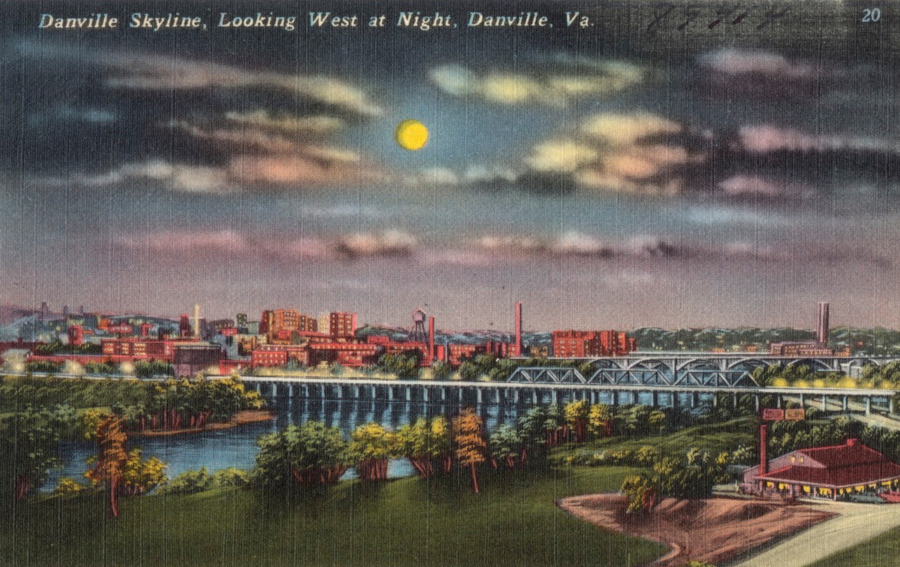
Danville developed as an industrial city processing tobacco and textiles
Source: Boston Public Library, Tichnor Brothers Postcard Collection, Danville skyline, looking west at night, Danville, Va.
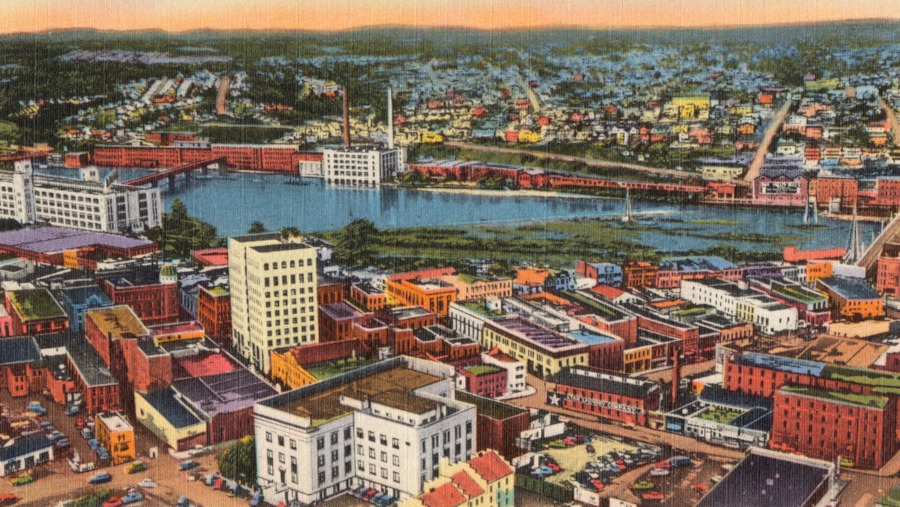
Dan River Mills was the textile producer
Source: Boston Public Library, Tichnor Brothers Postcard Collection, Aerial view of Business Section, Danville, Virginia, looking north, showing Riverside Div. Dan River Mills center left
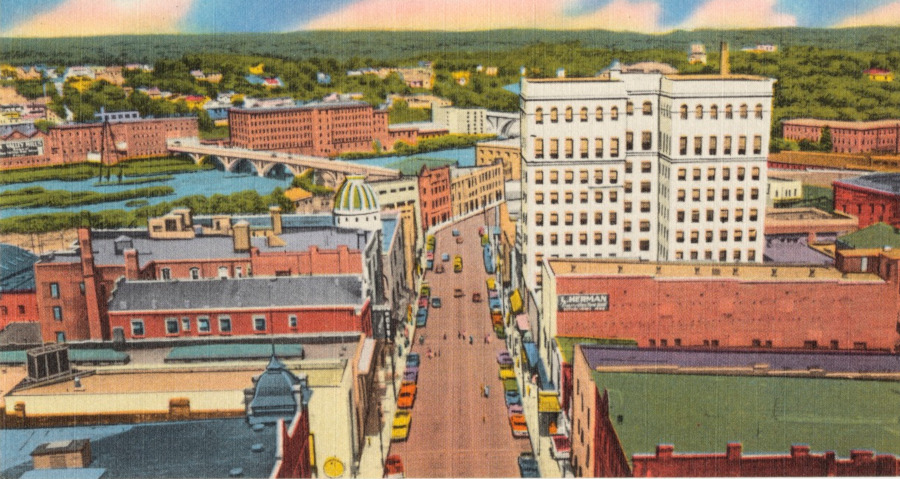
Danville had to repurpose old buildings after textile and tobacco businesses left town
Source: Boston Public Library, Tichnor Brothers Postcard Collection, Main Street, Danville, Virginia -- Central Business District, looking east to Dan River
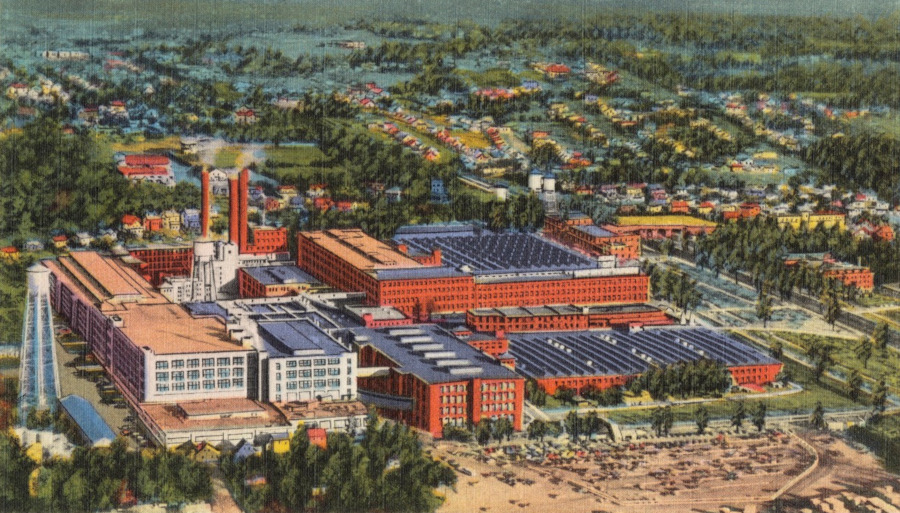
Dan River Mills, prior to 1945
Source: Boston Public Library, Tichnor Brothers Postcard Collection, Aerial view Dan River Mills, Schoolfield Division, Danville, Va
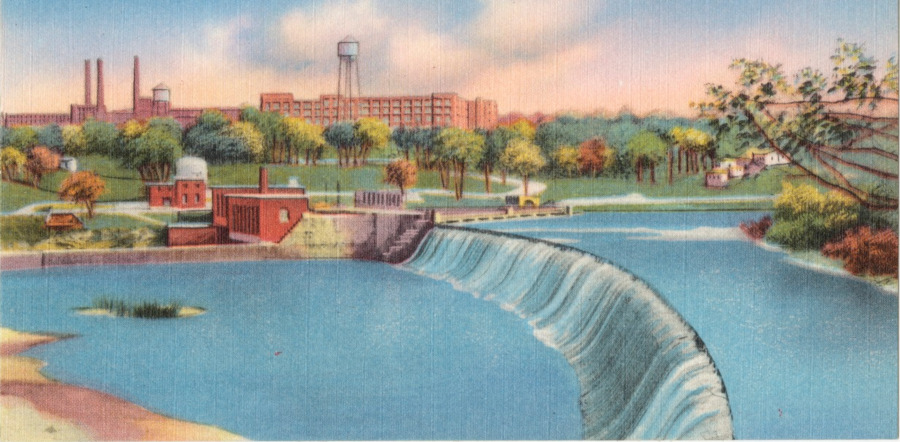
waterpower attracted industry to Danville
Source: Boston Public Library, Tichnor Brothers Postcard Collection, Schoolfield Dam and Dan River Mill, Danville, Va.
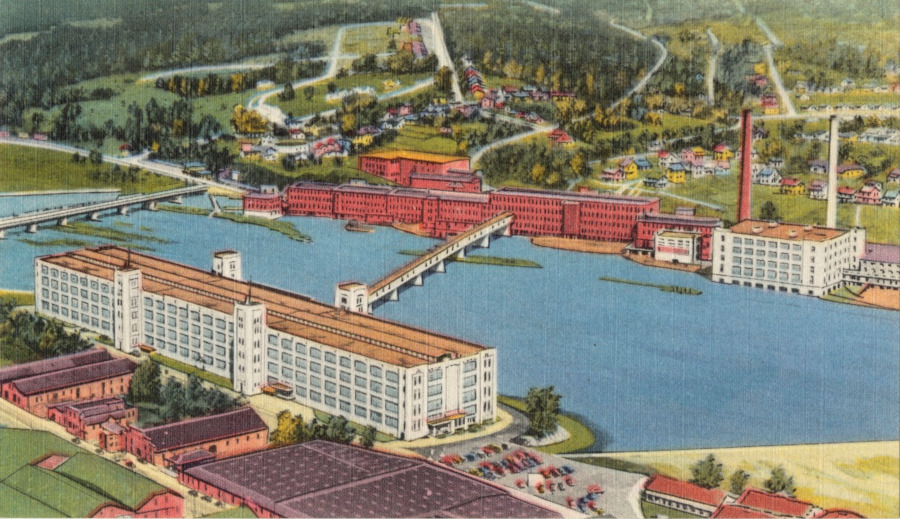
Dan River Mills built a bridge over the Dan River to connect two facilities
Source: Boston Public Library, Tichnor Brothers Postcard Collection, View of Riverside Division Dan River Mills, Danville, Va.
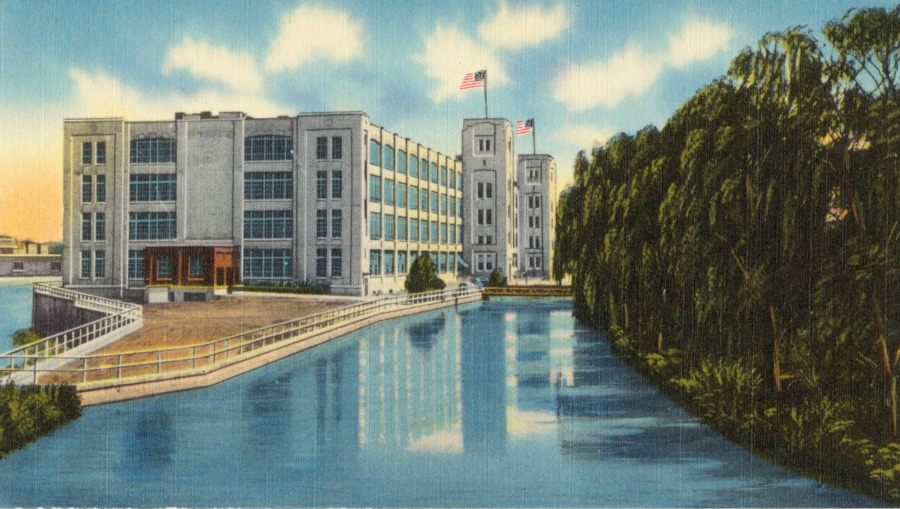
Dan River Mills produced high-quality fabrics
Source: Boston Public Library, Tichnor Brothers Postcard Collection, "It's a Dan River fabric," Dan River Cotton Mills, Danville, Virginia
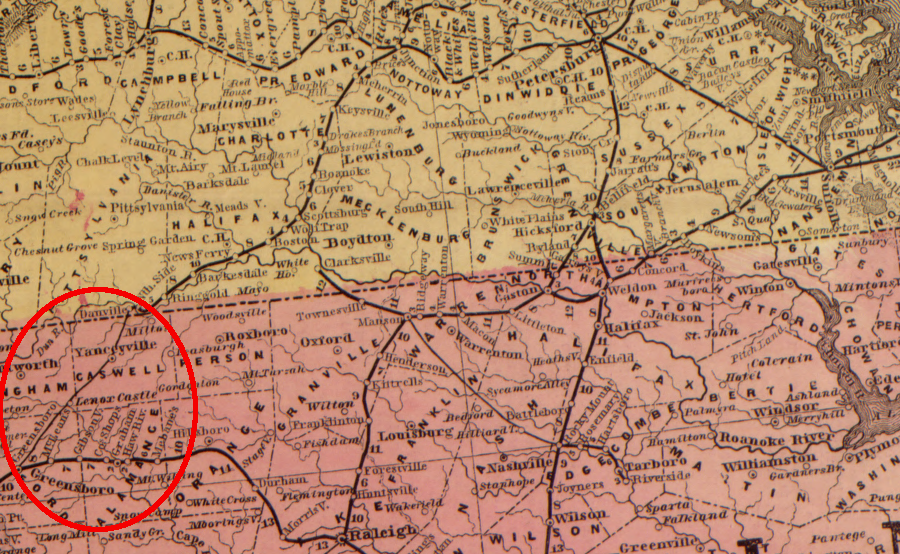
North Carolina blocked extension of the Richmond and Danville Railroad to Greensboro until the Civil War, when the Confederate Government overrode state's rights due to military necessity and mandated construction of the Piedmont Railroad
Source: Library of Congress, Lloyd's map of the southern states
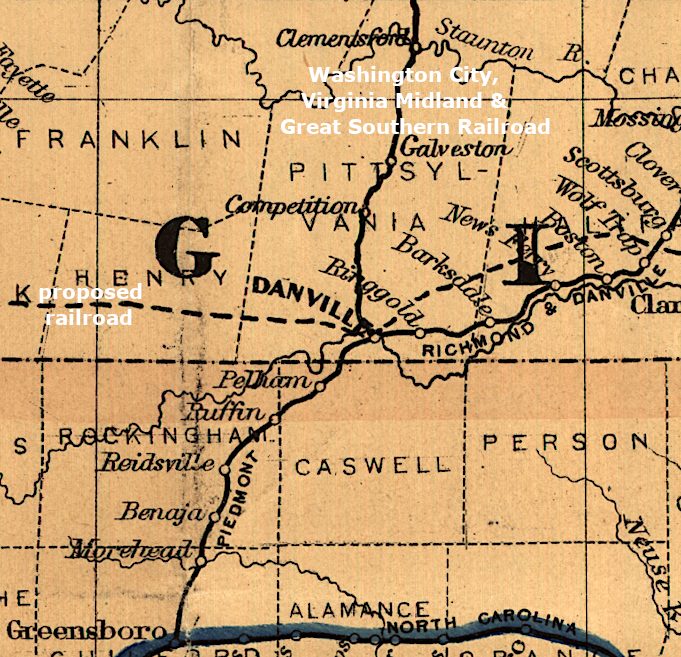
in 1874, Danville was served by the Richmond and Danville/Piedmont and the Virginia Midland railroads, with plans to build a trunk line parallel to the state border between Portsmouth-Cumberland Gap
Source: Library of Congress, Map of the Seaboard & Raleigh Railroad and its connections (1874)